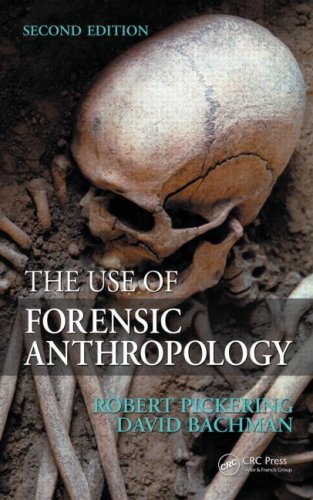Product desciption
The Use Of Forensic Anthropology 2nd Ed Robert B Pickering David Bachman by Robert B. Pickering, David Bachman 9781420068771, 1420068776 instant download after payment.
Introduction --, ''Some bones have been found'' --, Setting the scene --, Scenario one --, Scenario two --, Key points to remember when skeletal remains are discovered --, What the forensic anthropologist can and cannot do --, Finding a forensic anthropologist --, What the forensic anthropologist can do --, How to find a forensic anthropologist --, Establishing the ground rules --, Letters of agreement --, The case report --, Case report samples --, Techniques for recovering skeletonized human remains --, Equipment requirements --, ''I think there is a skeleton buried in this field'' --, ''Here's a bone, we have a problem'' --, ''Hey doc, what's in the box?'' --, The forensic anthropologist and recovery of remains --, Field recovery --, The final report --, Things you can do to make recovery easier --, Ten key questions --, Question #1: is it bone? --, Question #2: is it human? --, Question #3: is it modern? --, Question #4: what bones are present? --, Question #5: is there more than one person present? --, Question #6: what is the race, ethnicity, or cultural affiliation? --, Question #7: what is the sex? --, Question #8: what is the age? --, Question #9: what is the stature? --, Question #10: what are the individual characteristics of the remains? --, Summary --, Assessing ancestry, Determination of time since death --, The body --, The micro environment --, Eight essential environmental categories of information --, Special techniques: their value and limitations --, Facial reconstruction --, Direct facial reconstruction --, Craniofacial superimposition --, Video superimposition --, Footprint impression analysis --, Osteon counting --, Bitemark analysis --, ABO blood typing --, Forensic toxicology --, 14C dating --, DNA testing --, An introduction to forensic science and DNA /, Skeletal trauma and identifying skeletal pathology --, Antemortem trauma --, Perimortem trauma --, Postmortem trauma --, Pseudotrauma --, Pathologic changes in bone --, Follow-up steps for skeletal abnormalities --, Putting your case together --, Closing the case, closing the book --, Appendix: report forms --, Human remains investigation: General information --, Contextual description --, Recovery area --, General description of remains --, Inventory --, Photo and video inventory --, Glossary --, Bibliography --, Index.; George W. Gill --, Heather Miller Coyle


